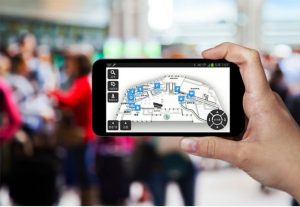The geolocation service market is a growing market, which will exceed USD 8 billion in 2014. It includes not only ordinary outdoor gps blocker, but also indoor tracking developed by different technology companies. to this end. So let us describe some examples that will show you how to develop internal controls.
When you browse stores, shopping malls or other public places, your smartphone will leave the “digital breadcrumbs” and different systems will collect and save them. This technology is called wireless fingerprinting. Usually, it is used with Wi-Fi bands, but other wireless frequencies can be used. For example, the Department of Homeland Security uses this tracking called GLANSER. For the FBI, this technology is very interesting because it can place people indoors and elsewhere, even underground places where GPS signals cannot be obtained.

Qubulus created another technology called QPS location engine. Their technology uses fingerprint recognition, because every place on the earth has a unique combination of radio waves, so it is unique in itself. Whether it is indoors or outdoors, the system can specify your location, up to three meters. And, of course, the technology uses all available frequency ranges for its operation.
The Scottish company Sensewhere has taken a different path. Since the accuracy of Cell-ID technology is about 300 meters, and the accuracy of Wi-Fi positioning is about 80 meters, they have created something new. In addition to these two technologies, their servers can also group and locate all mobile smartphones to create more accurate images (up to 5 meters in length) for all devices in each building.
A company called CSR created its SiRFstarV chip, which can use all available location tracking data sources to accurately determine indoor and outdoor locations (up to 10 meters). Similarly, Broadcom has also developed the BCM4752 microchip, which allows you to place your smartphone outdoors, indoors or even underground. height. Their microchip has the highest accuracy among other chips on the market, which means a few inches of accuracy. Are you happy to discover the possibility of this follow-up inspection? Or maybe you are afraid of being followed in one of these ways? If it is true, you can prevent your smartphone from tracking your location anywhere and keep it confidential.